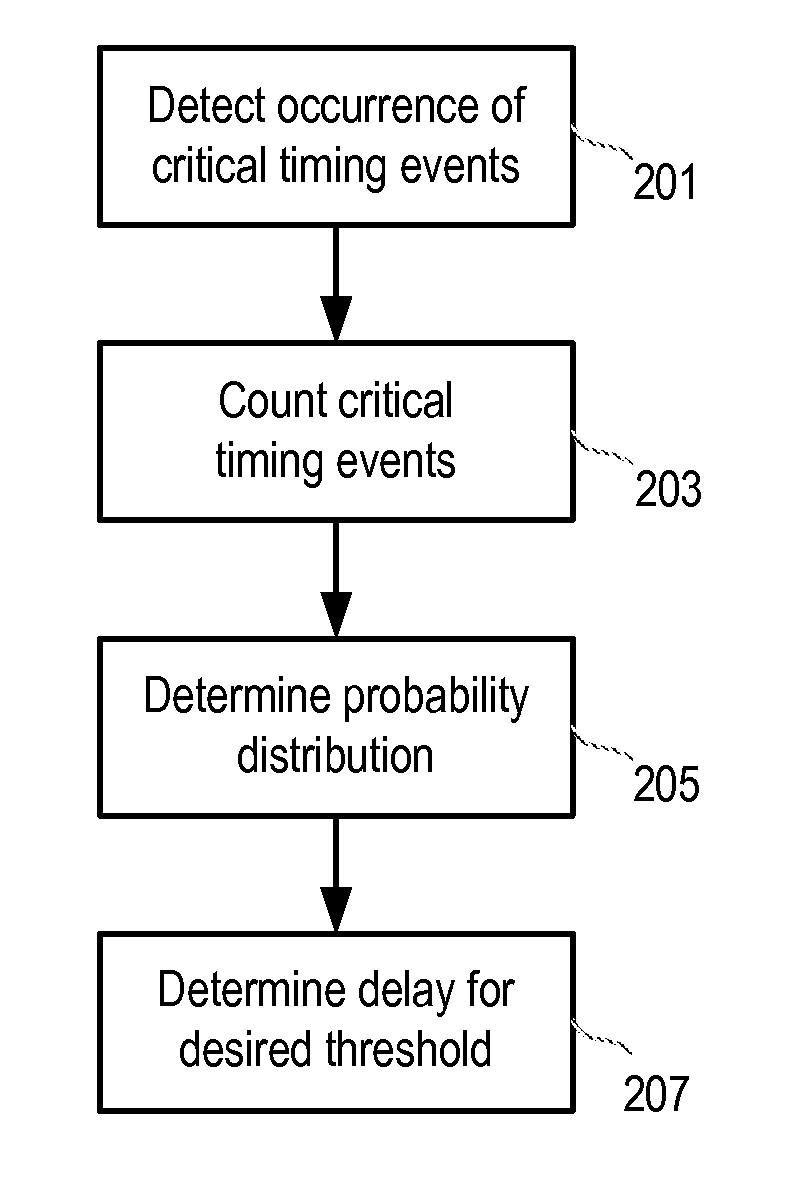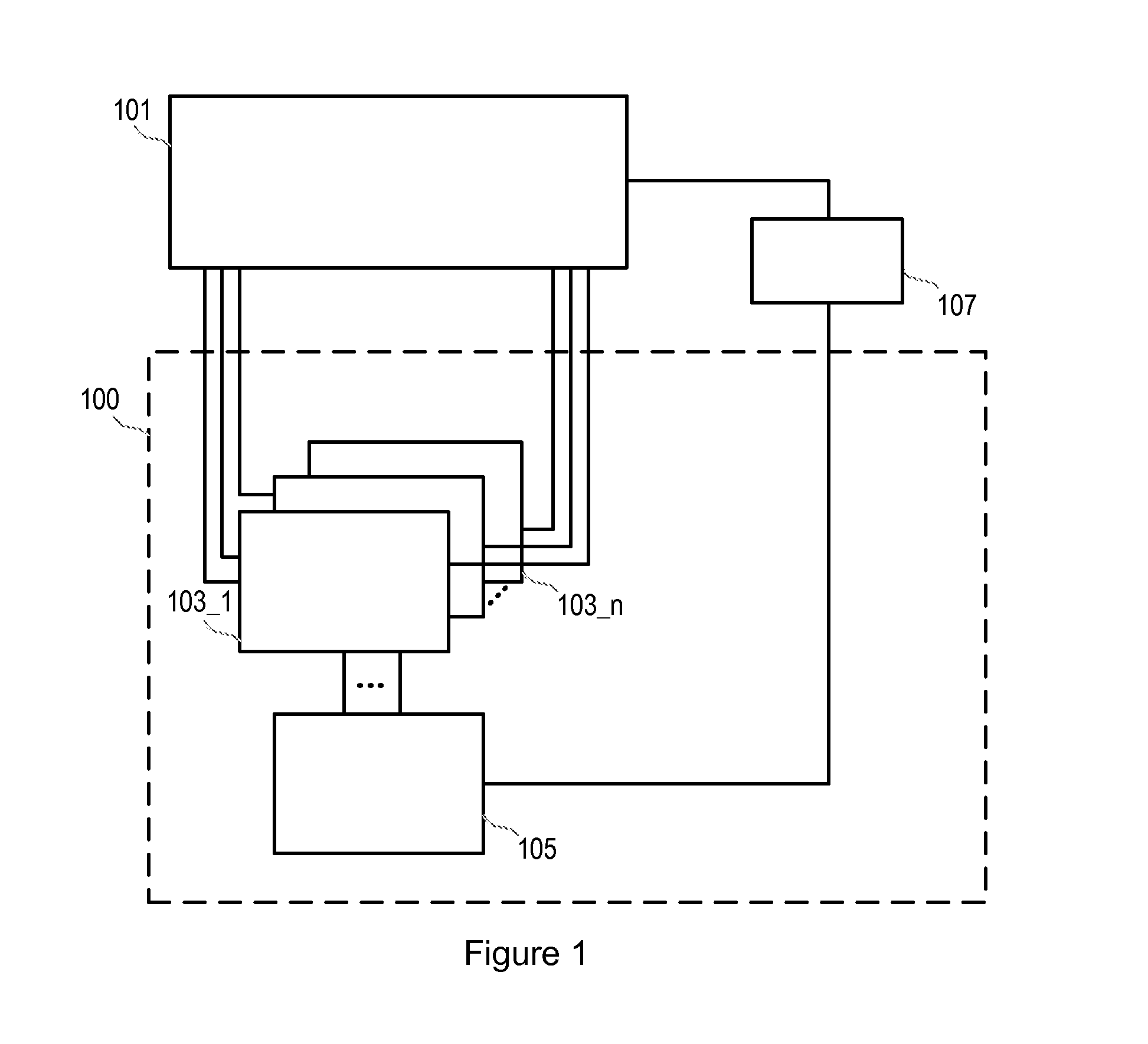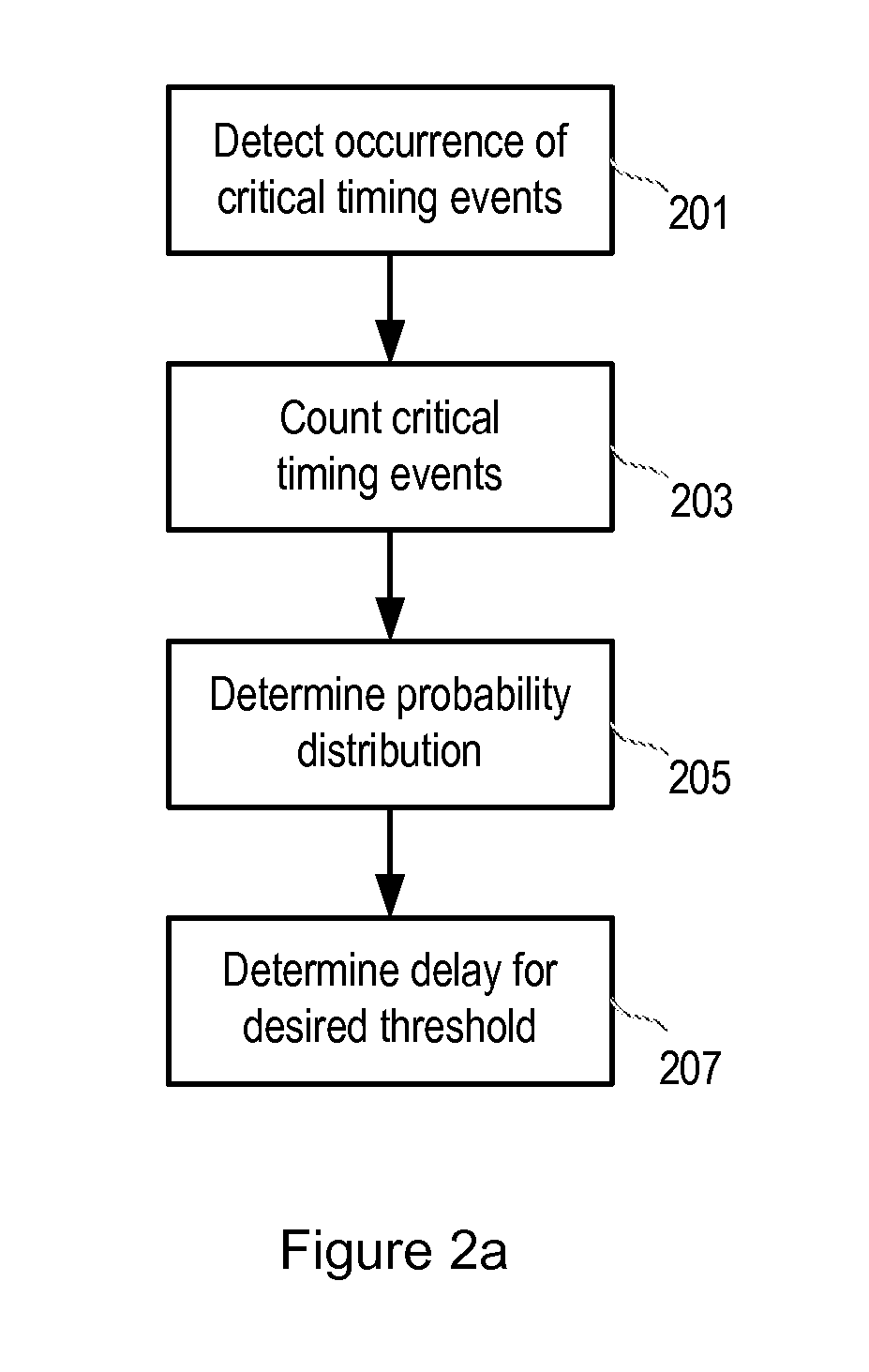Method and Apparatus for Monitoring Timing of Critical Paths
a technology of critical path and monitoring method, applied in the direction of instruments, specific program execution arrangements, program control, etc., can solve the problems of path failure first, erroneous operation, and path failure, and achieve the effect of reducing the drawbacks of existing systems
- Summary
- Abstract
- Description
- Claims
- Application Information
AI Technical Summary
Benefits of technology
Problems solved by technology
Method used
Image
Examples
Embodiment Construction
[0035]With reference to FIGS. 1, 2a and 2b, apparatus 100 for monitoring timing of a plurality of critical paths of a functional circuit 101 according to an embodiment of the present disclosure comprises a plurality of canary circuits 103_1 to 103_n, each coupled to a critical path of the functional circuit 101. Although FIG. 1 shows 3 canary circuits, it can be appreciated that any number of canary circuits may be utilised.
[0036]With reference to FIG. 2a, during the design phase of the functional circuit, each canary circuit 103_1 to 103_n detects critical timing events, step 201. The output of the canary circuits is connected to an analyser circuit 105 for receiving the critical timing event output from at least one of the plurality of canary circuits 103_1 to 103_n via simulation or static time analysis, described in more detail below, and for detecting, step 201, and maintaining a count, step 203, of the number of critical timing events that occur at each of a plurality of delay...
PUM
 Login to View More
Login to View More Abstract
Description
Claims
Application Information
 Login to View More
Login to View More - R&D
- Intellectual Property
- Life Sciences
- Materials
- Tech Scout
- Unparalleled Data Quality
- Higher Quality Content
- 60% Fewer Hallucinations
Browse by: Latest US Patents, China's latest patents, Technical Efficacy Thesaurus, Application Domain, Technology Topic, Popular Technical Reports.
© 2025 PatSnap. All rights reserved.Legal|Privacy policy|Modern Slavery Act Transparency Statement|Sitemap|About US| Contact US: help@patsnap.com



